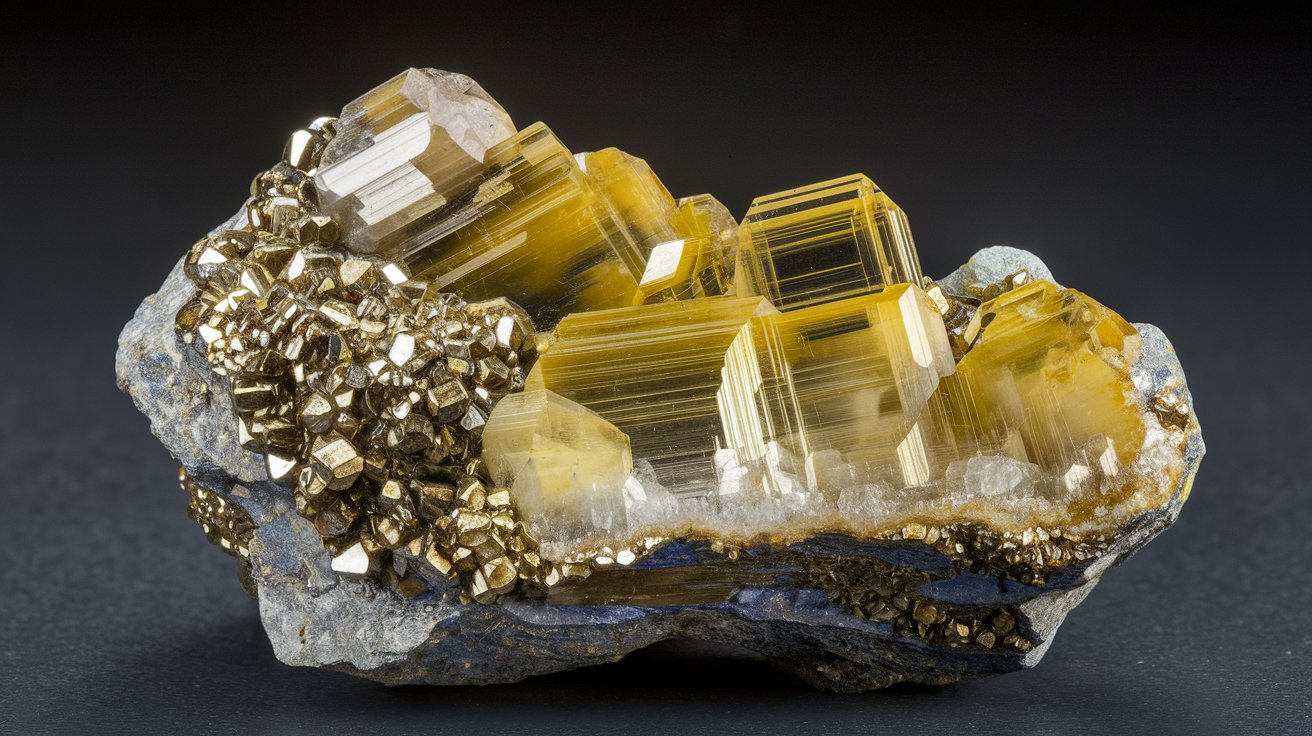
Danalite is a fascinating mineral that often piques the curiosity of geology enthusiasts. But what exactly is Danalite? Danalite is a rare mineral belonging to the silicate group, specifically a member of the helvite group. It typically forms in granite pegmatites and skarns, showcasing a unique blend of iron, zinc, manganese, and beryllium. This mineral is named after the American mineralogist James Dwight Dana, who made significant contributions to the field. Danalite crystals are usually reddish-brown or pink, making them quite striking. If you're eager to learn more about this intriguing mineral, keep reading for 30 fascinating facts that will deepen your understanding and appreciation of Danalite.
Key Takeaways:
- Danalite is a rare mineral with unique properties, named after American mineralogist James Dwight Dana. It's found in the US, Canada, Sweden, Norway, and Russia, and is primarily collected by enthusiasts and studied by geologists.
- Danalite's reddish-brown crystals, association with other minerals, and fluorescence under UV light make it a fascinating addition to mineral collections. It's also occasionally used in jewelry and has appeared in popular culture.
What is Danalite?
Danalite is a rare mineral that belongs to the silicate group. It is named after the American mineralogist James Dwight Dana. This mineral is known for its unique properties and fascinating history.
- Danalite is a member of the silicate group of minerals.
- It was named after James Dwight Dana, a prominent American mineralogist.
- The chemical formula for Danalite is Fe2+4Be3(SiO4)3S.
- Danalite typically forms in granite pegmatites and skarns.
- It is often found in association with other minerals like garnet, quartz, and feldspar.
Physical Properties of Danalite
Danalite has several distinctive physical properties that make it interesting to mineralogists and collectors alike. These properties include its color, hardness, and crystal structure.
- Danalite crystals are usually reddish-brown or yellowish-brown.
- The mineral has a Mohs hardness of 5.5 to 6.
- Danalite has a vitreous to resinous luster.
- It forms in isometric crystals, often appearing as dodecahedrons.
- The mineral has a specific gravity of 3.2 to 3.5.
Occurrence and Locations
Danalite is not a common mineral, but it can be found in specific locations around the world. These locations often have the right geological conditions for Danalite to form.
- Danalite is primarily found in the United States, particularly in New Hampshire and Massachusetts.
- It has also been discovered in Canada, specifically in Quebec.
- Other notable locations include Sweden, Norway, and Russia.
- Danalite is often found in regions with granite pegmatites.
- It can also occur in skarn deposits, which are formed by the contact metamorphism of limestone.
Uses and Significance
While Danalite is not widely used in industrial applications, it holds significance for collectors and researchers. Its unique properties and rarity make it a valuable addition to mineral collections.
- Danalite is primarily collected by mineral enthusiasts.
- It is studied by geologists to understand the formation of silicate minerals.
- The mineral's unique properties make it a subject of interest in mineralogical research.
- Danalite specimens are often displayed in museums and educational institutions.
- It is sometimes used in jewelry, although this is rare due to its relative softness.
Interesting Facts About Danalite
There are several intriguing aspects of Danalite that make it a fascinating mineral. These facts highlight its unique characteristics and historical significance.
- Danalite was first described in 1866 by American mineralogist James Dwight Dana.
- The mineral is named in honor of Dana's contributions to mineralogy.
- Danalite is part of the helvite group of minerals, which also includes helvite and genthelvite.
- The mineral's name is sometimes misspelled as "danalite" instead of "danalite."
- Danalite can fluoresce under ultraviolet light, showing a bright orange or red color.
Danalite in Popular Culture
While not as well-known as some other minerals, Danalite has made appearances in various forms of media and popular culture. These instances often highlight its unique properties and rarity.
- Danalite has been featured in several mineralogical books and publications.
- It is sometimes mentioned in documentaries about rare minerals.
- The mineral has appeared in exhibitions at major museums around the world.
- Danalite is occasionally referenced in academic papers and research articles.
- It has been used as a reference point in discussions about silicate minerals and their properties.
Final Thoughts on Danalite
Danalite, a fascinating mineral, holds a unique place in geology. Its distinctive red to brown color and crystal structure make it a standout. Found mainly in granite pegmatites, it's a member of the helvite group. This mineral contains beryllium, iron, and sulfur, which contribute to its unique properties. While not as well-known as other minerals, danalite's rarity and composition make it valuable for collectors and researchers. Understanding danalite helps us appreciate the diversity and complexity of Earth's geology. Whether you're a seasoned geologist or just curious about minerals, danalite offers a glimpse into the intricate world beneath our feet. Keep exploring and learning about these natural wonders; there's always something new to discover.
Frequently Asked Questions
Was this page helpful?
Our commitment to delivering trustworthy and engaging content is at the heart of what we do. Each fact on our site is contributed by real users like you, bringing a wealth of diverse insights and information. To ensure the highest standards of accuracy and reliability, our dedicated editors meticulously review each submission. This process guarantees that the facts we share are not only fascinating but also credible. Trust in our commitment to quality and authenticity as you explore and learn with us.
